If your garden is in a wet area or you have trouble keeping your plants watered, don’t despair. Many moisture-loving plants will do well in wet soil. Some of these plants are even native to areas that regularly experience flooding. One benefit of growing moisture-loving plants is that they are often very tolerant of poor drainage and compacted soils. This means they can be a good choice for gardens with heavy clay soils.
Moisture-loving plants also tend to be very hardy and can survive periods of drought once they are established. Another benefit of growing moisture-loving plants is that they can help to prevent erosion. Plants with deep root systems help to hold the soil in place, which can be beneficial on slopes or in areas that experience frequent heavy rains.
18 moisture loving plants that thrive in wet soil
Iris
Iris is a moisture-loving plant that thrives in wet soil. Iris grows best in full sun to partial shade and prefers moist, well-drained soil. It can tolerate short periods of drought but will not survive long periods of dryness. Iris is an herbaceous perennial that blooms in the spring and summer. The leaves are sword-shaped and grow from the base of the plant. Iris is an easy plant to care for and does not require much fertilizer or pest control. They will also do well in boggy areas if the soil is not too wet.
In case you missed it: How to Build a Garden Wall: DIY Steps, Cheapest Way to Build, Ideas and Tips
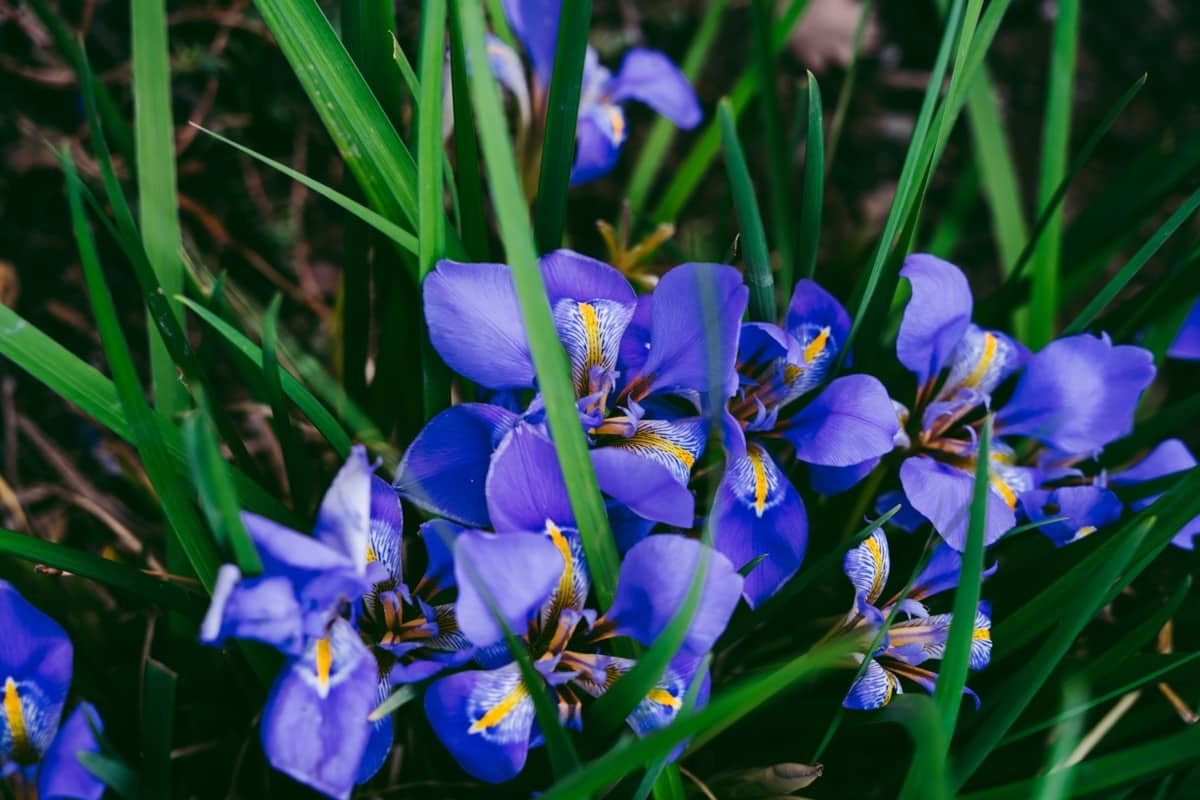
Turtlehead
Turtlehead is a moisture-loving plant that thrives in wet soil. It is a perennial herb with heart-shaped leaves and pink or white flowers that bloom in late summer and fall. It prefers moist, well-drained soil but can also grow in wetter conditions. Once established, turtlehead is quite drought tolerant. It is an excellent choice for rain gardens or other areas where water collects. Turtlehead attracts butterflies and pollinators and makes a beautiful addition to any garden.
Japanese Primrose
Japanese Primrose is a moisture-loving plant that thrives in wet soil. The plant has delicate, pink flowers that bloom in springtime. Japanese Primrose is popular for gardens and landscaping because of its beautiful flowers and easy-care requirements. Japanese Primrose is a good choice for gardeners who want to add color to their landscape without worrying about the plant’s water needs.
Calla Lily
Calla Lilies are one of the many moisture-loving plants that will thrive in wet soil. They are a beautiful addition to any garden, and their unique shape makes them stand out amongst other flowers. Calla Lilies require little maintenance and will bloom for several weeks each summer. This flower loves wet soil and can even grow in standing water. If you have a spot in your yard that is always wet, consider planting some Calla Lilies.
In case you missed it: Most Common Succulent Propagation Mistakes: Every Gardener Should Know
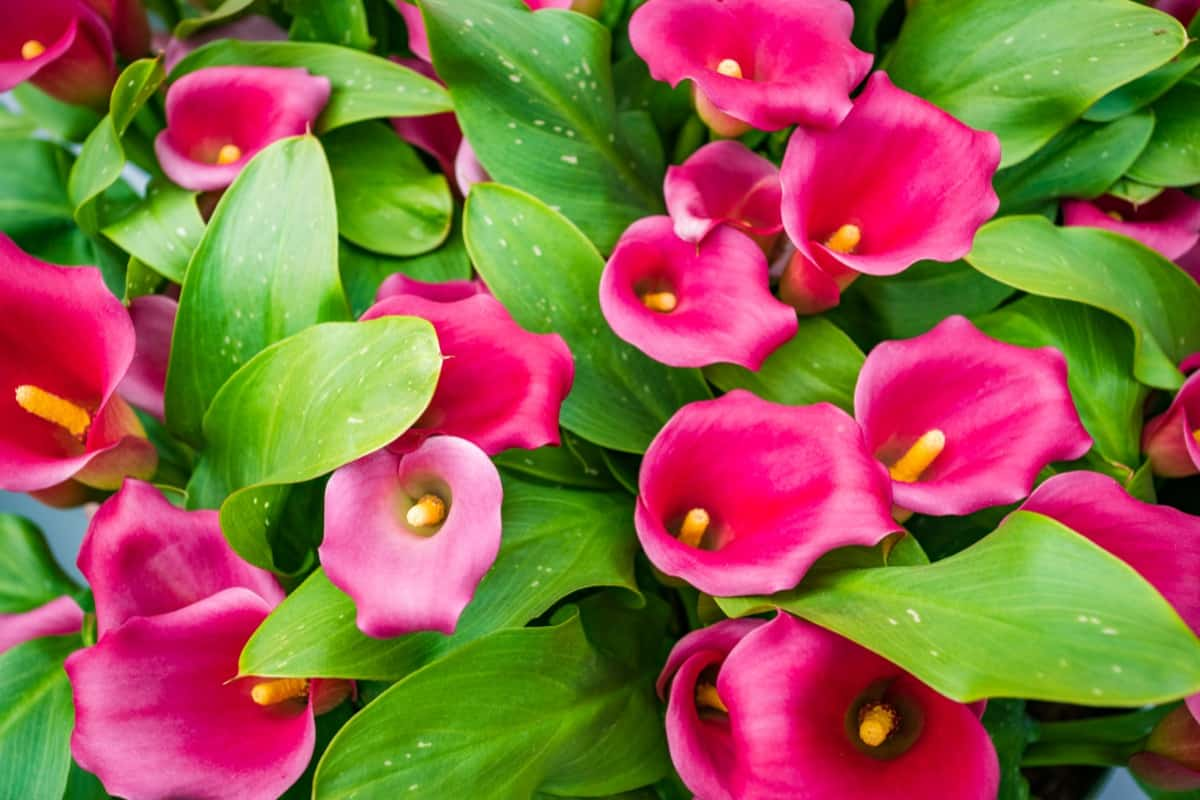
Canna
Canna is a tropical plant that loves moisture and wet soil. Canna is a popular ornamental plant, and it is often used in landscaping. It has large, bright flowers that come in a variety of colors. Canna is a hardy plant that can tolerate wet conditions. It is an excellent choice for gardeners who live in humid climates or have wet soil.
Canna plants thrive in consistently moist soil but are not soggy or waterlogged. If you live in heavy rainfall or your soil is naturally wet, then Cannas are a great choice for your garden. When planting Cannas, be sure to choose a spot that gets plenty of sunlight. They will also need room to spread out, so give them some space. Once established, Cannas are relatively low-maintenance plants.
Cardinal flower
The Cardinal flower is a beautiful, moisture-loving plant that thrives in wet soil. The Cardinal flower grows up to three feet tall and produces stunning red flowers that attract hummingbirds and butterflies. The plant blooms from midsummer to early fall and prefers full sun to partial shade. Cardinal flower is relatively easy to care for and does not require much maintenance. However, it is important to water the plant regularly during the growing season to ensure its health and vigor.
Forget-Me-Not
Forget-Me-Nots are one of the most well-known moisture-loving plants. They are perfect for wet soil, as they can tolerate long periods of moisture and grow in standing water. Forget-Me-Nots will also do well in average to moist soils as long as they are not allowed to dry out. These little blue flowers add color to any garden and thrive in wet soil conditions. Forget-Me-Nots are easy to care for and require very little maintenance, making them the best choice for beginner gardeners.
In case you missed it: Growing Forget-Me-Not Plants: A Guide to Propagation, Planting, and Care for Beginners
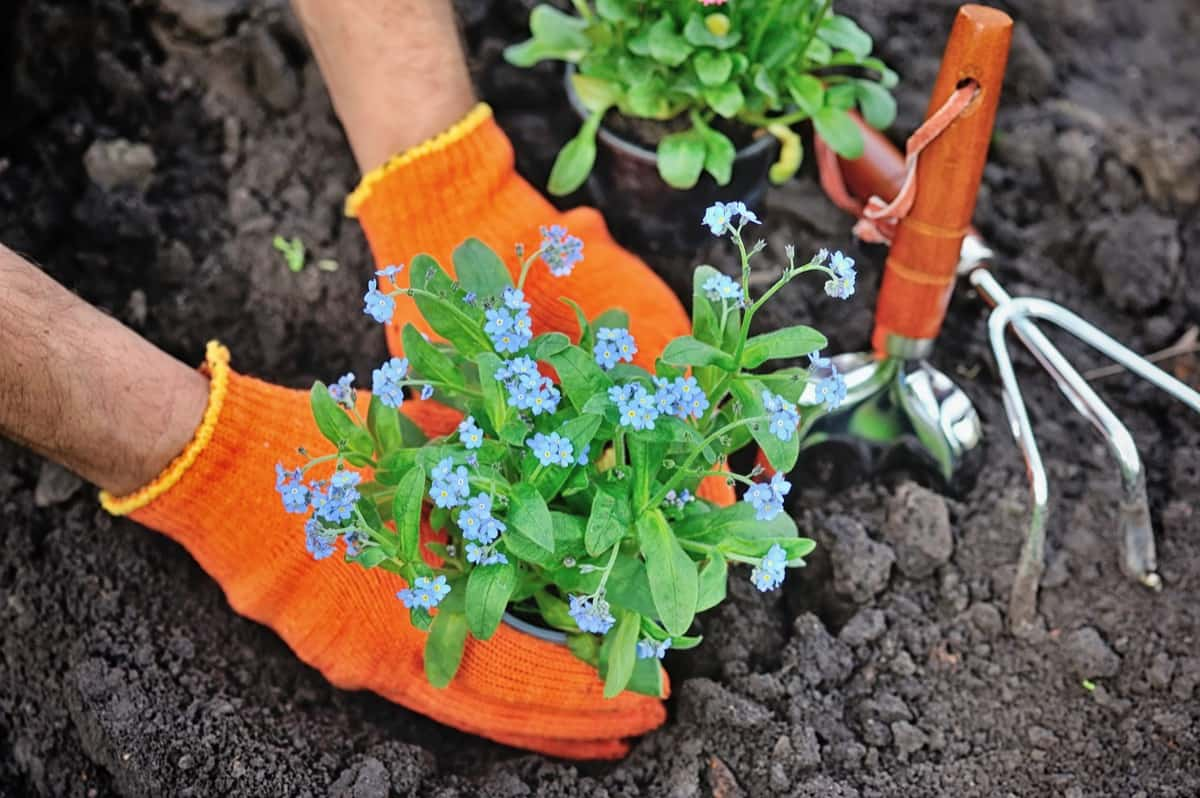
Spiderwort
Spiderwort is a moisture-loving plant that thrives in wet soil. They have long, pointed leaves and small, three-petaled flowers in various colors, including white, pink, purple, and blue. Spiderworts are relatively easy to care for and make an excellent addition to any garden.
Sedge
Sedges are moisture-loving plants that thrive in wet soil. They are perfect for problem areas where water collects or puddles form. Sedges help to break up the soil and allow water to penetrate and drain more easily. Some Sedges can even tolerate standing water for short periods.
Sedge is a moisture-loving plant that thrives in wet soil. It is a low-growing, creeping plant with long, slender leaves often mistaken for grass. Sedges come in various colors and sizes, so there is sure to be one that will fit your needs. They are also low maintenance and easy to care for. You can have a beautiful garden that thrives in wet conditions with little effort.
Swamp Sunflower
Swamp Sunflowers are one of the many moisture-loving plants that thrive in wet soil. While they prefer wet conditions, Swamp Sunflowers can tolerate dry spells and bloom in standing water. Swamp Sunflowers are easy to grow and make a great addition to any garden. They grow best in full sun but can also tolerate partial shade. These flowers prefer rich, moist soil but do well in poor, sandy soils. Swamp Sunflowers are very tolerant of heat and humidity and make an excellent choice for gardens in hot, humid climates.
Bleeding Heart
Bleeding Heart is a beautiful, moisture-loving plant that thrives in wet soil. The heart-shaped flowers are pink, red, or white and hang down from the stems like little drops of blood. Bleeding Hearts bloom in early to mid-spring and make excellent cut flowers. It will tolerate some sun if the soil is kept moist, but too much sun will cause the leaves to scorch. The Bleeding Heart grows best in partial shade with protection from the hot afternoon sun.
In case you missed it: How to Grow and Care for Bleeding Heart Plant: A Beginners Guide
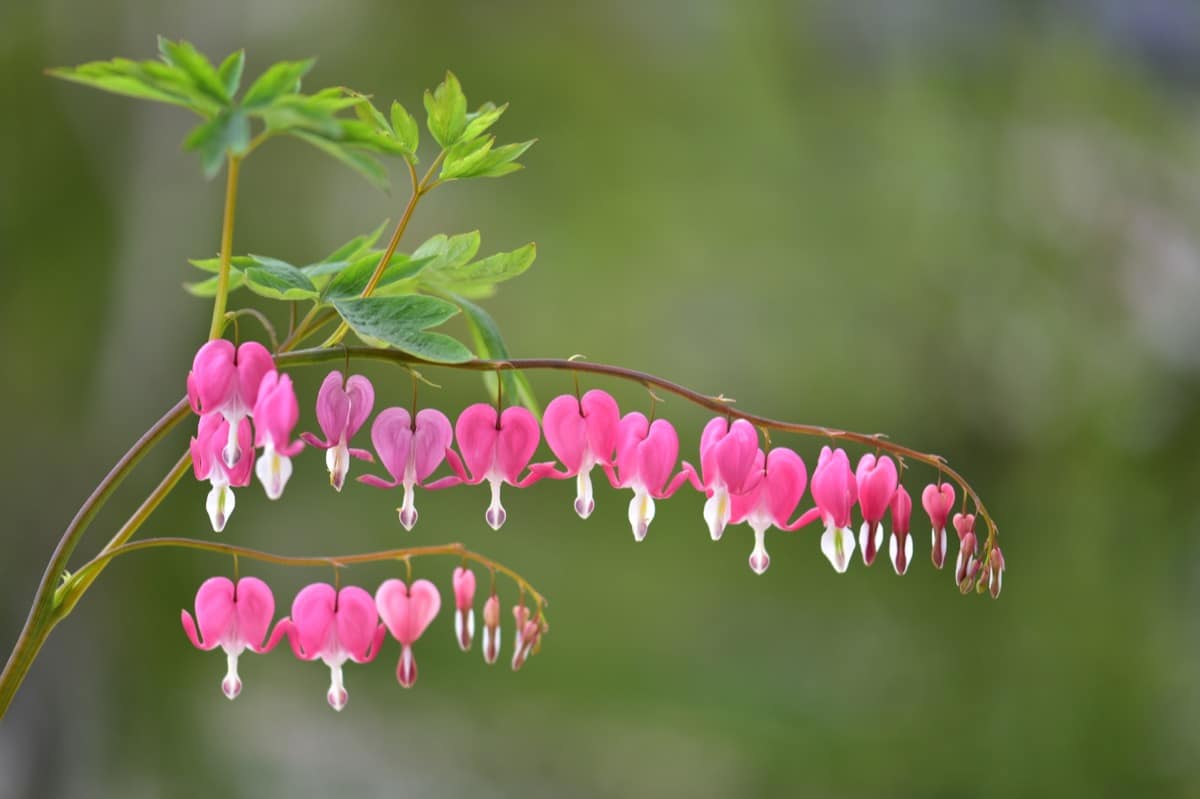
Golden Creeping Jenny
Creeping Jenny is a moisture-loving plant that does well in shady, wet areas. This plant has bright yellow leaves and forms a dense mat. It is perfect for use as a ground cover or in hanging baskets. Creeping Jenny will tolerate some sun but does best in partial shade.
Golden Creeping Jenny is a moisture-loving ground cover plant that does well in wet areas of the garden. This low-growing plant has bright yellow leaves and spreading stems that root easily as they touch the ground. Golden Creeping Jenny is an excellent plant for quickly covering large areas of damp ground. It will tolerate some sun but looks best in shady areas.
Hosta
Hostas are one of the most popular moisture-loving plants. They thrive in wet soil and can tolerate full sun or shade. Hostas come in various colors and sizes, so you can find one to fit any garden. Hostas are one of the most popular moisture-loving plants. They are perfect for planting in wet soil or near water features.
In case you missed it: 12 Plants that Repel Ants to Include in Your Garden

Hostas come in a variety of sizes, shapes, and colors. Some have variegated leaves, while others have solid green leaves. There are even some that have blue-green leaves. The flowers of Hostas range in color from white to lavender. Hostas are low-maintenance plants that are relatively pest and disease resistant.
Winterberry
Winterberries are small, round berries that are red and ripen in the fall, remaining on the plant throughout the winter. Winterberry is a deciduous plant that will lose its leaves in the winter. This hardy plant adapts to many growing conditions but does best in moist soil. Too much sun can reduce fruit production. Winterberry is a great choice for gardeners looking to add interest to their landscape during winter.
Cattail
Cattails are one of the most moisture-loving plants and thrive in wet soil. Cattails are often found in marshes, swamps, and wetlands. Cattails are often considered a weed, but they are a very versatile and useful plant. Cattails are moisture-loving plant that thrives in wet soil. They can grow up to six feet tall and have long, slender leaves. The flowers are small and brown, and the plant produces large quantities of pollen.
In case you missed it: Best Tips for Making Pepper Plants Hotter: Great Ideas for Beginners
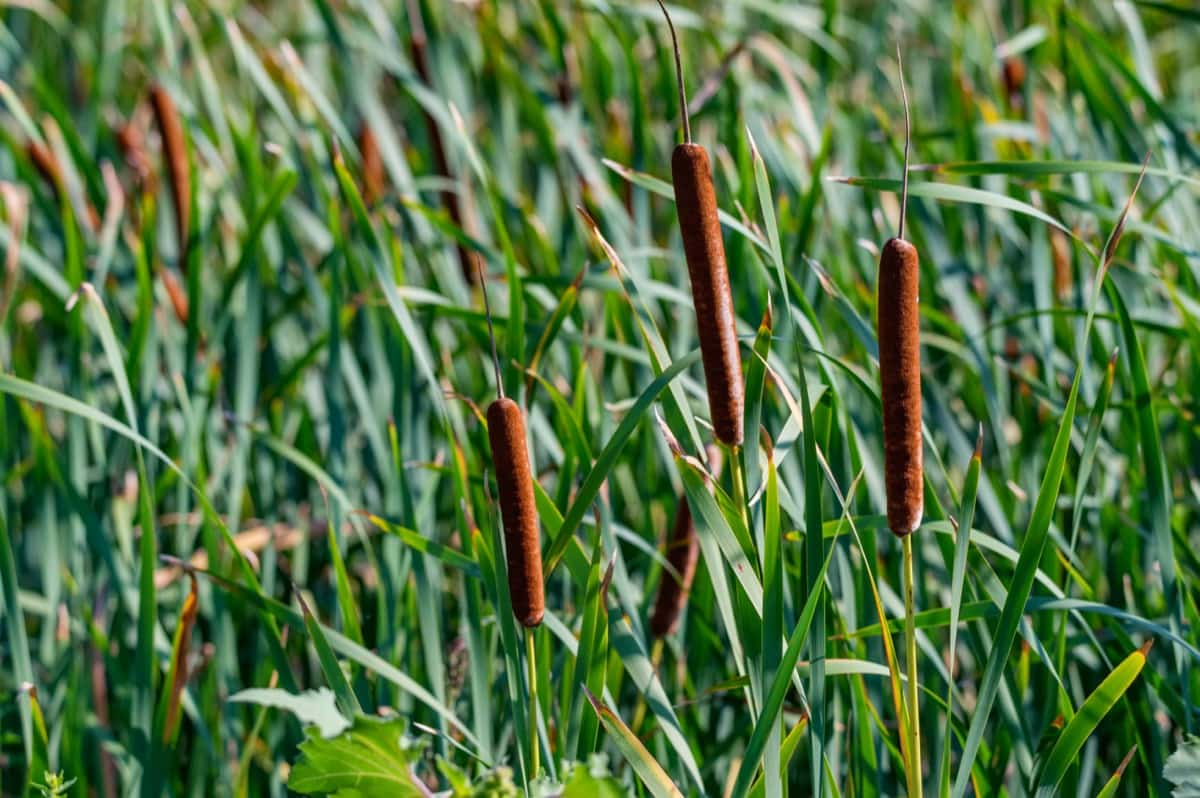
Elephant Ear
Planting Elephant Ears is the best way to brighten up your garden if you live in an area with high humidity or rainfall. These moisture-loving plants are native to tropical regions and thrive in wet soil. Elephant Ears come in various colors, including green, black, and copper. They range in size from 2 to 8 feet tall and wide. When planting Elephant Ears, it’s important to keep their roots moist. Water them deeply once a week, and mulch around the base of the plant. Elephant Ears are heavy feeders, so fertilize them regularly during the growing season.
Bee Balm
Bee Balm is a moisture-loving plant that thrives in wet soil. Bee Balm grows best in full sun to partial shade and moist, rich soil. It tolerates heavy clay soils as long as they are not too dry. Bee Balm will spread aggressively if given the opportunity, so it is best suited to areas where it can be contained. The flowers of Bee Balm attract bees, butterflies, and hummingbirds.
Ferns
Ferns are a type of moisture-loving plant that does best in wet soil. While Ferns prefer moist conditions, they can also tolerate periods of drought better than other moisture-loving plants. This is because Ferns have a special type of root system that helps them store water during dry periods. When watering Ferns, avoid getting the leaves wet, as this can cause them to rot.
Ferns are a type of plant that thrives in wet soil. They are often found in moist, shady areas and can tolerate extended periods of moisture. Ferns typically have long, thin leaves that grow in various shapes and sizes. Ferns are relatively easy to care for and make an excellent addition to any garden or indoor space.
In case you missed it: Best Ferns for Hanging Baskets: Types of Ferns to Grow in Hanging Planters
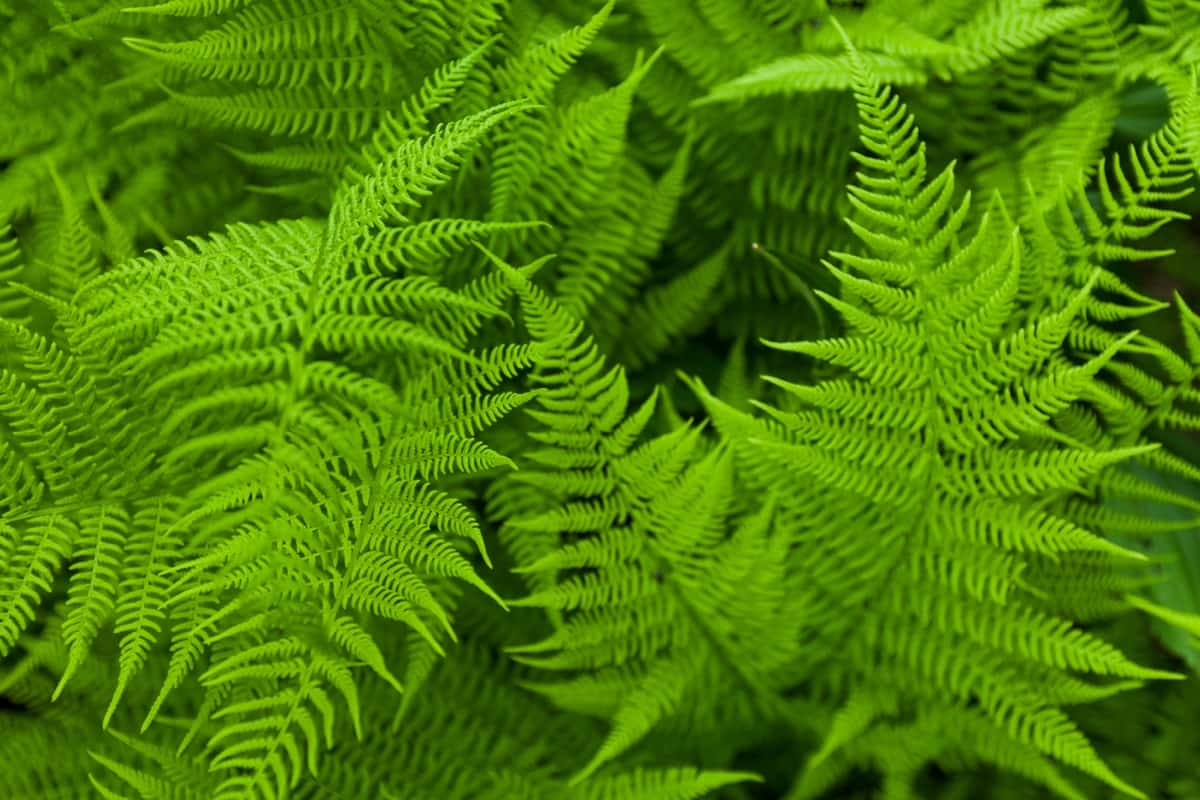
They prefer to be kept in moist soil and should be watered regularly. Ferns do not require a lot of sunlight and will do best in indirect light or partial shade. When it comes to fertilizer, less is more for these plants. Over-fertilizing can cause Ferns to become yellow and may even kill the plant. If you choose to fertilize your Fern, use a half-strength solution applied every few months.
Conclusion
You should remember a few things when it comes to moisture-loving plants. First, these plants generally prefer wetter soil than average. This means that they may not do well in areas that experience prolonged periods of dry weather. Also, moisture-loving plants are more susceptible to pests and diseases than other plants.
Their increased moisture levels provide an ideal environment for pests and diseases to proliferate. Finally, it is important to remember that too much moisture can be just as harmful to these plants as too little moisture. With careful research and selecting the right species, you can transform even the wettest soils into an eye-catching paradise.
- Flower Garden Designs and Layouts for Beginners
- Planting and Spacing Techniques in Papaya: A Beginner’s Guide
- Growing Gold: Essential Techniques for Planting Pineapples
- How to Make Kalanchoe Plant Bushy: Home Remedies and Solutions
- 11 Reasons Why Your Gardenia is Not Blooming: Home Remedies and Solutions
- Eco Elegance: The Guide to Designing a Drought-Tolerant Landscape
- Gardening on a Slope: Strategies for Hillside Landscaping
- Nourish and Flourish: Top Organic Mulches for Thriving House Plants
- Everything You Want to Know about Indian Mogra Flower: Discover Uses and Growing
- Green Thumb Success: Expert Tips for Cultivating Greenhouse Pumpkins All Year Round
- Maximize Growth & Flavor: The Ultimate Guide to Companion Planting in Herb Gardens
- How to Control Rhododendron Problems Naturally: Home Remedies and Organic Ways to Fix Them
- Natural Magic: The Remarkable Benefits of Cinnamon for Plants
- Best Steps to Revive Dying Tulip with Natural and Organic Treatment
- 10 Reasons Why Your Angel Trumpet is Not Blooming: Remedies and Treatment
- How to Fix Periwinkle Leaf and Flower-Related Problems: Natural Remedies and Solutions
- How to Fix Zinnias Leaf and Flower Problems: Discover Natural and Home Remedies
- Organic Steps to Induce Lemon Tree Flowers: A Comprehensive Guide
- Bloom Booster: Crafting the Perfect Homemade Bougainvillea Fertilizer
- Optimizing Growth: A Guide to Applying NPK Fertilizer for Potted Plants
- 10 Best Homemade Fertilizers for Rubber Plant: DIY Recipes and Application Method
- How to Boost Female Pumpkin Flowers: Effective Steps for More Flowers and High Yields
- Transform Your Indoor Garden: Top Benefits of Pink Salt for Houseplants
- 10 Best Homemade Fertilizers for Peacock Plants (Calathea): Easy DIY Guide
- Unlock Blooms: 9 Reasons Why Your Potted Chrysanthemum is Not Blooming
- 8 Reasons Why Your Potted Hibiscus is Not Blooming: Fix it with Simple Solutions
- Unlock Blooms: 9 Key Reasons Your Potted Frangipani Won’t Flower
- 10 Reasons Why Is My Ice Plant Not Blooming: Remedies and Treatment
- 10 Reasons Why My Potted Hydrangea Not Blooming: Treatment and Remedies
- 10 Reasons Why is My Wisteria Not Blooming: Remedies and Treatment
- 10 Reasons Why is My Goldfish Plant Not Blooming: Remedies and Treatment
- Maximize Your Space: Ultimate Guide to Balcony Gardening with Grow Bags
- 10 Reasons Why Your Iris is Not Blooming: Remedies and Treatment
- 10 Reasons Why Your Anthurium Plant is Not Blooming: Treatment and Remedies
- 10 Reasons Why Your Aquaponic Plants Are Not Flowering: Remedies and Treatment
- 10 Reasons Why Your Agapanthus is Not Flowering: Remedies and Treatment